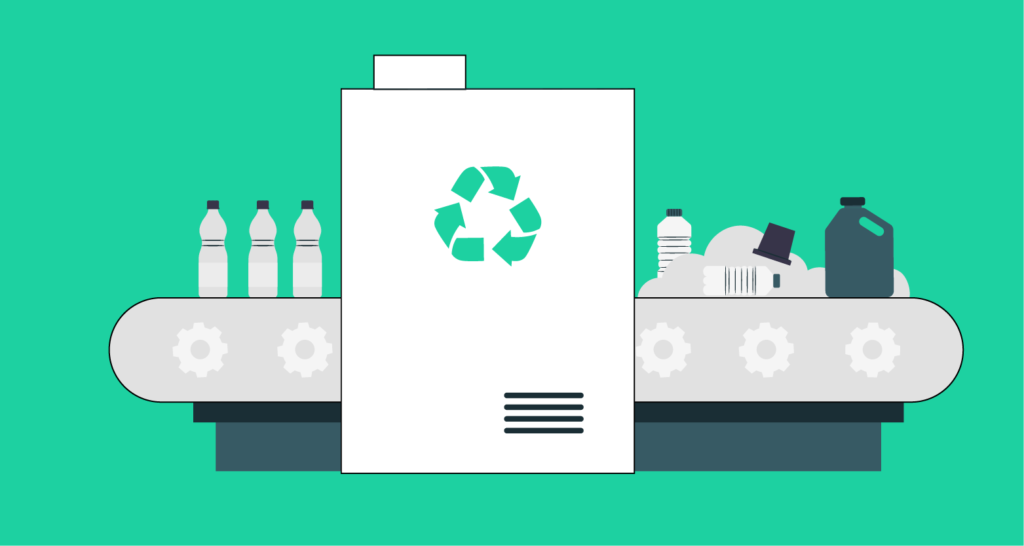According to the United Nations Environment Programme, 11 billion tons of waste are produced worldwide. About 91% of plastic is not recycled, and only 20% of what goes into our recycling bins ends up being recycled. Poor waste management leads to air and water pollution, soil contamination, and the mass effect of climate change.
With this in mind, major corporations such as Google, and Uniliver are committing to a zero-waste goal. Microsoft announced that they have committed to achieving zero waste goals by 2030. Despite their best intentions, humans are still confused about how and what to recycle.
In this article, we will explore what a waste audit is and why your organization should conduct one, as well as the technology that can make waste management a more efficient system.

Waste Audit: What it is and How it Works
A waste audit is a method of analyzing a facility’s regular waste stream. It can help organizations reduce waste, determine whether they have adequate waste management strategies, and identify ways to improve the process.
In August 2021, the most extensive study on commercial building waste across the United States. They conducted waste audits at more than 100 buildings and analyzed 170,000 pounds of waste during the study. The findings showed that commercial buildings generally throw away 62% of the recyclable trash, and only 38% are residuals that cannot be recycled or composted.
As per the waste audit, here’s what a general trash stream looks like:
- 36% organics
- 14% glass, metals, and plastic
- 10% paper
- 1% cardboard
- Less than 1% of electronic waste

Conducting a Waste Audit: Step-by-Step
Conducting a waste audit is usually a five-step process. Each step requires substantial planning, resources, and time. The five steps to conduct a waste audit are:
- Assembling a team and setting a date
- Determining waste categories
- Gathering tools required for the audit
- Sorting through the trash
- Analyzing the final results

The Problems with Traditional Waste Audit
A waste audit allows organizations to find value in what they are about to throw away. There are multiple benefits to a waste audit, but here are the top four ways a waste audit can help your organization:
- Make data-driven decisions
- Save money
- Measure success over time
- Meet Certification Standards such as LEED
When it comes to your waste trail, no one pays attention to what they throw away. Even though waste data does not seem attractive, it holds the key to impact change. Can you remember the last thing you threw in the trash?
Unfortunately, traditional waste audit data is general and high-level, and it often lacks critical details that can help your organization bring about change. That is why it’s often unable to help organizations devise their procurement or purchasing strategies.
An automated solution to waste audits: Autonomous systems such as TrashBot are accurate data sources for waste audits, helping to optimize the waste management process while improving over time through machine learning. We are talking about a smart recycling bin that uses artificial intelligence and the cloud, becoming smarter as time passes. With efficient waste audit data and insights, this solution will help you save money and efficiently manage waste throughout your organization.

AI and Robotics for Waste Management Solutions
When it comes to waste management, you might think that a human being can make better decisions. However, a survey revealed that 62% of respondents agreed that a lack of recycling education is causing them to recycle incorrectly. In addition, other factors such as the evolving recycling laws per region make it hard for the user to keep up with what is recyclable or compostable in which part of the world.
Recycling Smart Bins are the solution for organizations that want to pursue a zero-waste goal but are facing obstacles along the way.
CleanRobotics developed an autonomous system that leverages AI, computer vision, and robotics to detect and separate recyclables from landfill units. Here is how TrashBot can revolutionize waste management:
- TrashBot is designed to make an environmental impact by separating waste items at the time of disposal. It’s an excellent solution for high-traffic areas where people dispose of things without a second thought.
- It offers organizations an alternative way to conduct lengthy, labor-intensive, and costly waste audits. They can instantly get on-demand, exportable waste audits and use the data for decision insights.
- To make the job easier for custodial operations, TrashBot updates the fullness status in real-time.
- TrashBot also comes equipped with a built-in screen and content management system. This system allows you to educate the public about recycling as well as communicate your organization’s sustainability goals.

Not only is the Trashbot 3x more accurate than humans, but it also keeps improving over time. The recycling AI captures high-quality data, and the users can get on-demand, exportable waste audits at their disposal.

